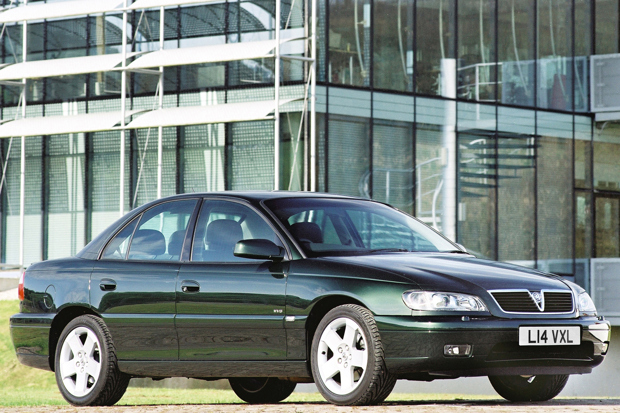A future classic? Vauxhall Omega

Executive cars today are largely the preserve of premium brand manufacturers, but in the 1990s even the more accessible brands were keen to get in on the act.
Back in the day when a large saloon was a status symbol, rather than a leviathan SUV, mass-market players such as Ford, Rover, Renault and indeed Vauxhall tried to muscle in on territory occupied by mostly higher end competitors.
Launched in late 1994, the Vauxhall Omega wasn't the easiest sell. With BMW, Mercedes and Audi ramping up their presence in the fleet market and the dawn of the company car 'user chooser', the days of Ford Escort-Sierra-Granada, Vauxhall Astra-Cavalier-Omega and Rover 200-400-600-800 forming a social strata of company car drivers were rapidly dwindling.
And while the Vauxhall Omega was, in many respects, a cracking car, it was also one that was launching itself into a dying market - a fact borne out by 2002, its last full year on sale, the Vauxhall Omega sold less than a third of what it did in 1995, it's first full year. A large number of those later cars went to Vauxhall management, too.
But the car had its fans. It was comfortable, well-equipped and, in estate form, genuinely capacious - you could get more in the back of a Vauxhall Omega than you could a Volvo V70.
It was a massive hit with traffic police, especially in V6 form, as it was rapid, handled superbly and could carry all manner of kit - indeed, when it was announced that production would cease in 2003, we know of at least two police forces that bulk-bought them so they had a few left in reserve.

It was also an impeccable tow car, well loved by the caravan fraternity. For the mainstream buyer, there were initially three engine choices - 2.0-litre four-cylinder, 2.5-litre and 3.0-litre V6, soon followed by a 2.5-litre straight-six turbo-diesel developed in conjunction with BMW.
A significant facelift in 1999 brought with it a new face, wider rear lights and uprated engines, with the 2.0-litre replaced by Vauxhall's 2.2-litre four pot, which had a lot more torque but was subsequently far less reliable. There were 2.6-litre and 3.2-litre V6s, with a new range-topping MV6 model, with a whopping 210bhp (allegedly more if you opted for the constabulary tune...).
Like all big execs from mainstream car makers, the Vauxhall Omega floundered as a used car. Massive depreciation, badge snobbery and poor maintenance in later years meant that many were cast aside, unloved and too expensive to run for many cheap car buyers. The attrition rate was vast.
But today, there's a following for the model and while scruffy Vauxhall Omegas are still worth next-to-nothing, there's demand out there for good ones, especially V6s in upper trim levels with prices are starting to sneak up.
Indeed, you only have to look at the surge of interest in the Vauxhall Omega's predecessors and the prices people will pay for good Carlton GSi 3000 and Vauxhall Senator models to recognise that a well preserved Vauxhall Omega CDX or MV6 will, one day, be something quite collectable. That day will be quite soon, so now is a good time to seek one out. Find a classic Vauxhall for sale.

